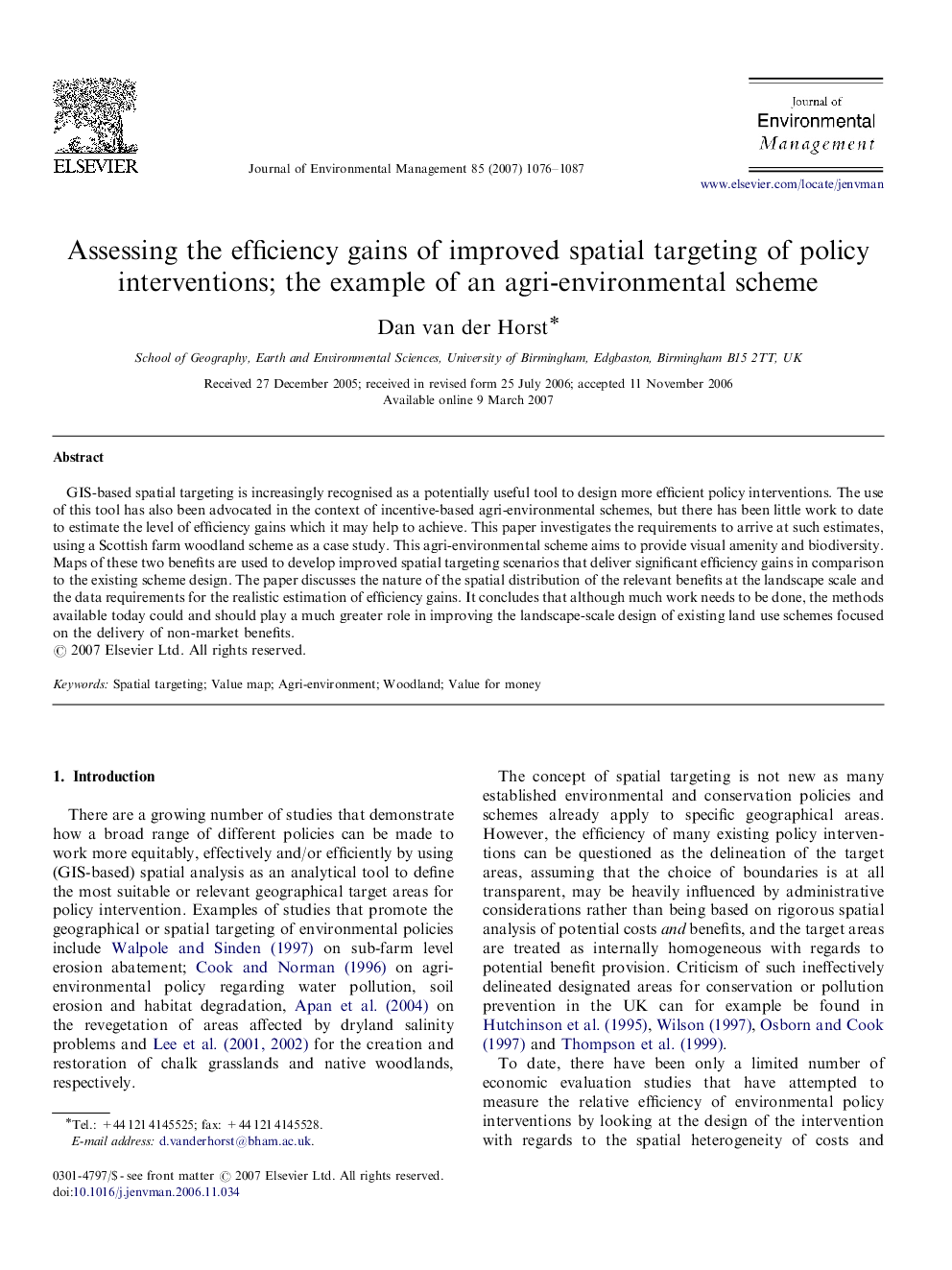| Article ID | Journal | Published Year | Pages | File Type |
|---|---|---|---|---|
| 1058510 | Journal of Environmental Management | 2007 | 12 Pages |
GIS-based spatial targeting is increasingly recognised as a potentially useful tool to design more efficient policy interventions. The use of this tool has also been advocated in the context of incentive-based agri-environmental schemes, but there has been little work to date to estimate the level of efficiency gains which it may help to achieve. This paper investigates the requirements to arrive at such estimates, using a Scottish farm woodland scheme as a case study. This agri-environmental scheme aims to provide visual amenity and biodiversity. Maps of these two benefits are used to develop improved spatial targeting scenarios that deliver significant efficiency gains in comparison to the existing scheme design. The paper discusses the nature of the spatial distribution of the relevant benefits at the landscape scale and the data requirements for the realistic estimation of efficiency gains. It concludes that although much work needs to be done, the methods available today could and should play a much greater role in improving the landscape-scale design of existing land use schemes focused on the delivery of non-market benefits.
